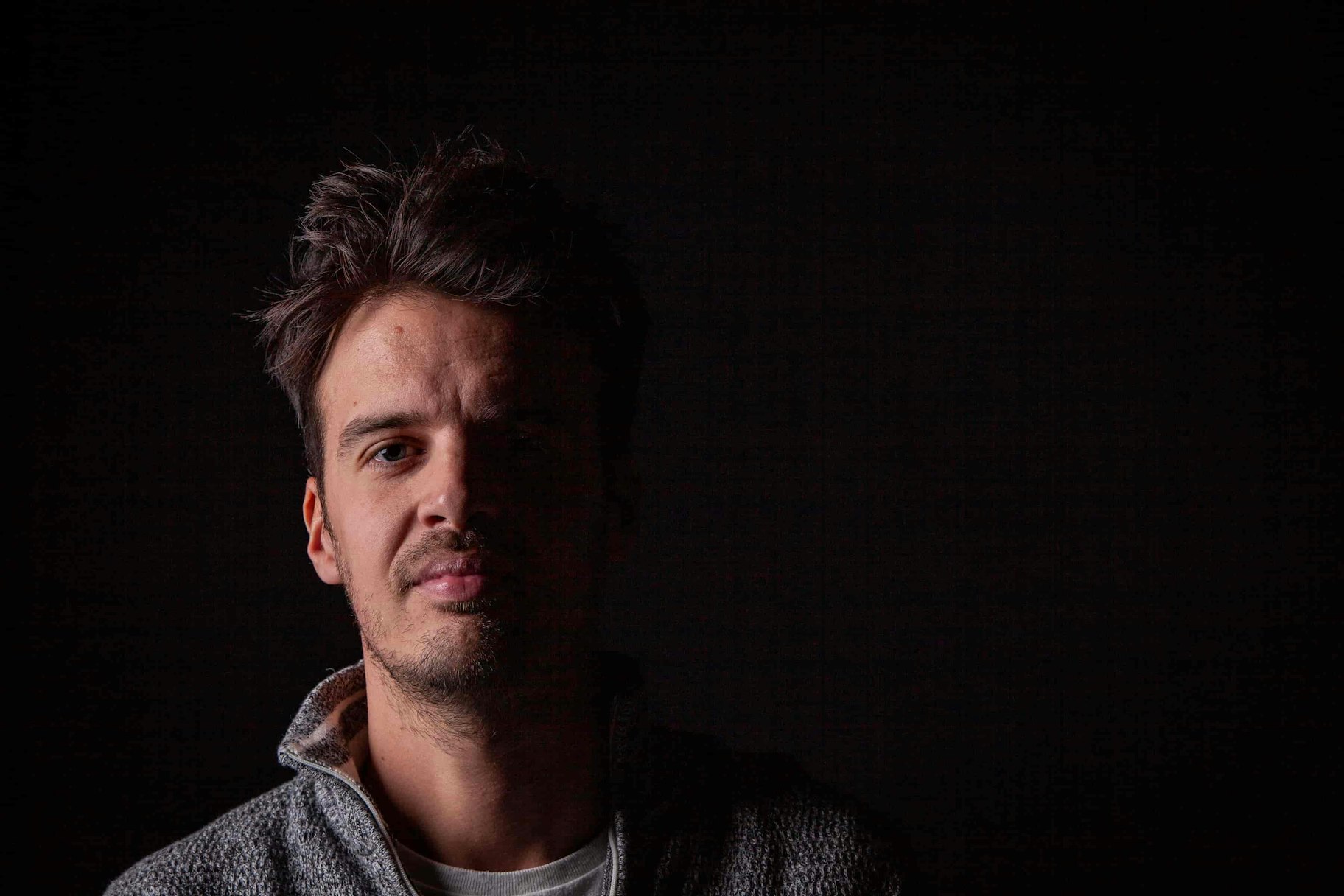Back in 2015, Pierre Emmanuel leaped into the unknown when he and his wife relocated from France to the United States.
With a background in marketing, Pierre took a job working as a Director of Digital Marketing for a Nevada-based company. However, because his wife’s visa didn’t allow her the right to work in the US, he needed a way to make extra money to support his family.
After discovering some of his clients were dropshipping using AliExpress and Shopify, Pierre decided to try it out for himself.
It was a match made in heaven.
Over the next few years, Pierre built his store, which is in the problem-solving niche, to the point of making over $1.6 million in revenue. The success has allowed him to provide a more comfortable lifestyle for his wife and his young son.
Eager to hear more about his dropshipping journey, I gave Pierre a call. We dug into some of his biggest dropshipping challenges, the techniques he used to grow his store, and how he finds his winning products.



Building a Business Out of Necessity
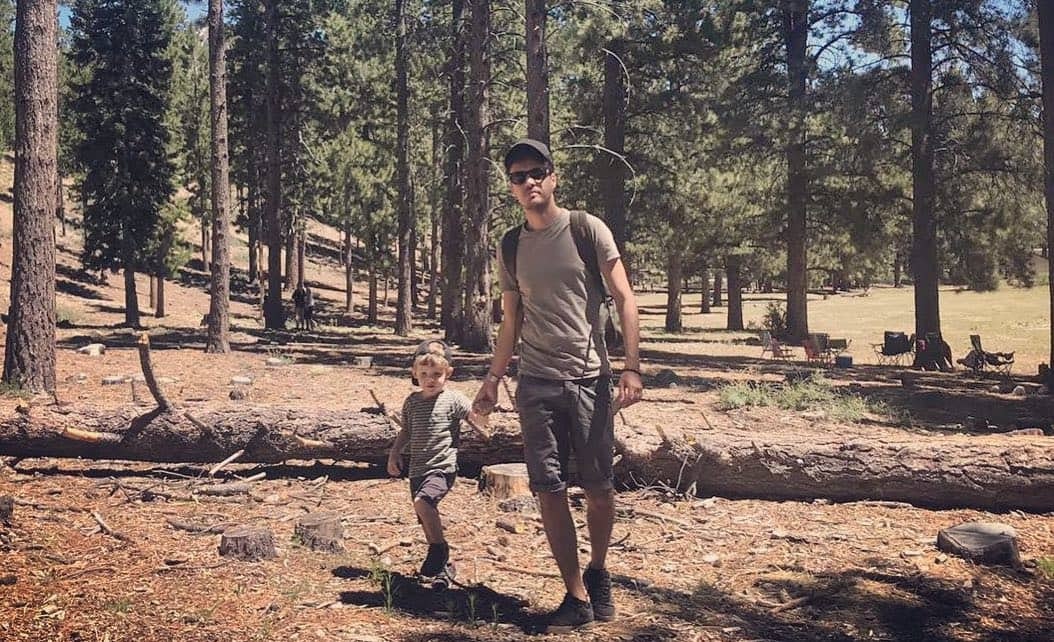
The saying goes that pressure makes diamonds, but for Pierre, it was more like dollar bills.
→ Click Here to Launch Your Online Business with Shopify
With his wife unable to work, Pierre needed to find a way to make extra cash. And, given that he already had a full-time job, it needed to be something that could offer high returns on the precious spare time that he invested in it.
Keen to use the skills he already had, he created an Upwork profile and took on extra digital marketing clients. As he helped his customers advertise their ecommerce stores on Google, he learned more about their business model.
“I met some clients that were doing dropshipping, and when I heard about how easy it was to set up a dropshipping business using Shopify, I found it amazing..”
After researching it a little more, Pierre discovered how quickly he could start a dropshipping business. And while it was certainly something that required time and money to set up, he could see that the initial investment would be returned many times over if he applied his marketing skills correctly.
“I realized I didn’t need anyone – I was able to do all that by myself in a quick manner. So, yeah, it was really appealing for me to test it out, because really most of the dropshipping business is about having the digital marketing skills to advertise online.”
Finding a Winner – And Problems
Knowing that he possessed the marketing knowledge to make his store a success, Pierre started a website and sourced products using AliExpress. After some testing, he found an item that began selling well – his first winning product.
Initially, things seemed to be going well. But then the problems started.
“At first, [the product] was a plastic version, and it was selling well, but I had a lot of returns, and people were not happy about the quality of the product.”
Finding a winning product can be difficult, and while popularity is important, it’s not the only thing that determines if a product will be a big earner. If a product is not particularly high quality, there’s a good chance that customers will have complaints. You may need to send customers replacement items – if they’re willing to wait for it – or issue refunds. In either case, this means your profits will take a beating.
Although his product was still wildly popular, Pierre could see that his business wasn’t going to survive unless he found a better quality version. Because he had to process a high number of returns, it meant a reduced profit margin. And unhappy customers could also result in a lousy customer feedback score on Facebook, which could lead to his ads getting suspended.
Thankfully, after dealing with a flood of returns and annoyed customers, Pierre found a solution to benefit everyone.
“I finally sourced the metal version of it. It was no longer plastic. And it was selling very, very, very well.”
It was his first major hurdle and a big lesson that quality matters.
However, this was far from Pierre’s only issue. He also came up against a challenge that many dropshippers face: Cash flow.
“PayPal reserved a part of my money – Shopify as well, for the first two months. [After] realizing I did not have a lot of chargebacks finally, they released everything.”
If money gets reserved as a store is trying to scale, it can make things incredibly tricky. Suddenly things are taken out of your hands, and you need to prove that orders are getting fulfilled to have a chance of the reserve getting removed.
Keeping good, easily accessible records is a great way to ensure any problems you have with cash flow will be resolved quickly and before it can impact your business.
Thankfully, Pierre was able to overcome these cash flow problems and continue scaling his store quickly.
Scaling to a Million
With his product selling well, Pierre decided to scale things and get professional with his ads.
“I even decided to do a video for my ad. So I paid a guy and he organized the shooting and everything. So we had like a 45-second ad. And from that, it worked really well.”
Although it cost $2,700 for the product video, the final product was fantastic and well-branded with his store’s name and logo. Using the video, he started scaling up Facebook ads, and the product took off.
With the cash pouring in, Pierre had a real success on his hands, but by now, he knew better than to let success or failure rest on one product. Instead, Pierre dedicated time to finding new potential winners using a simple two-step process. This system helped him quickly figure out if an item is worth his time and money.
First, Pierre would do something that Facebook has made easy thanks to its Page Transparency section on all Facebook pages: Spying on competitors.
“I spy a little bit on the competitors to see the numbers of views they have on their ads. And I know, because it’s my job, that an ad that has one million views is probably an ad that is working because if not, you’re spending a lot of money for nothing.”
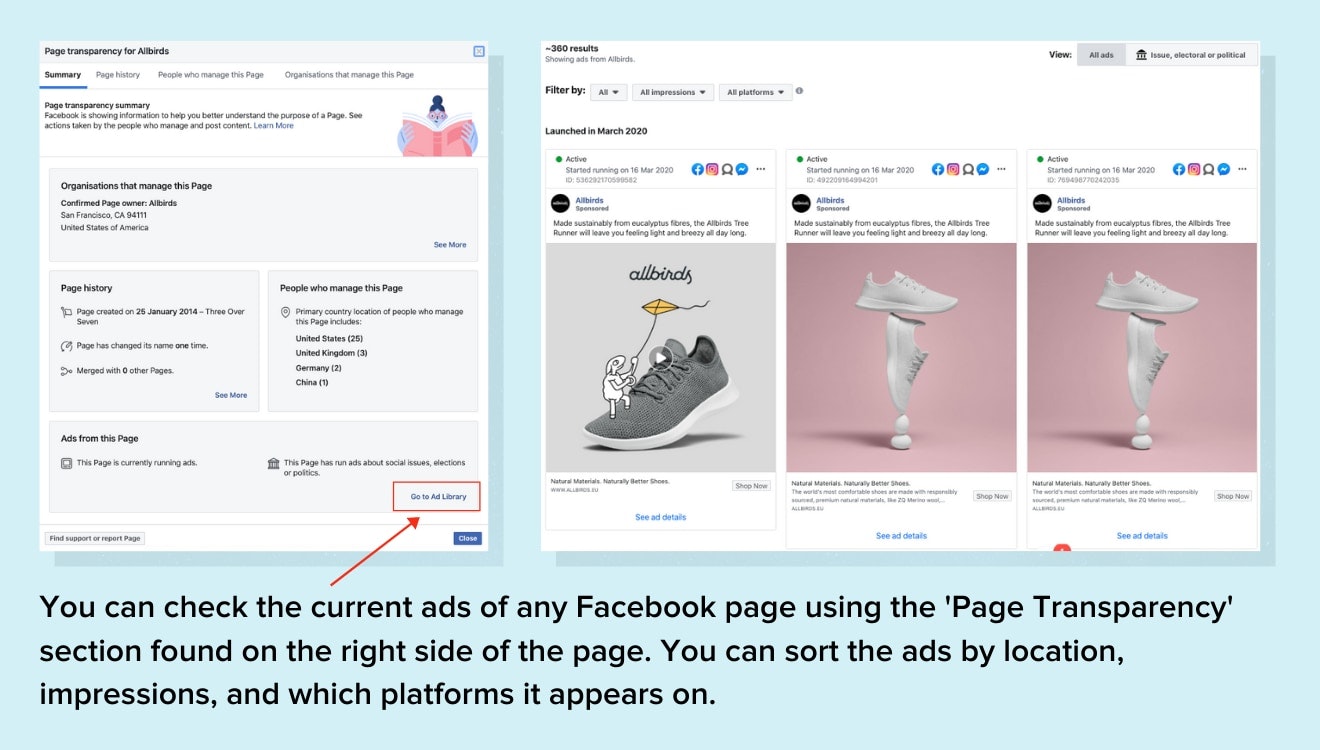
Once he establishes that the product has worked for someone else, Pierre knows that it’s worth testing his own money. So, the second part of his testing process is putting the item in his store, creating ads, and trying to make sales. However, as Pierre has learned, this doesn’t necessarily mean the product will sell.
“Most of the time, it doesn’t work. I probably lost a lot of money, if I sum up every product I tried and it didn’t work. But, if a product is really, really working, it’s worth trying 10 products that aren’t working. It’s part of the game.”
Although it’s reasonably straightforward, Pierre’s simple product validation system has worked well, resulting in a bunch of winning product.
And those winning products sold so well that he made nearly $1 million in 2019.
Not bad considering he runs the whole operation while also working full-time.
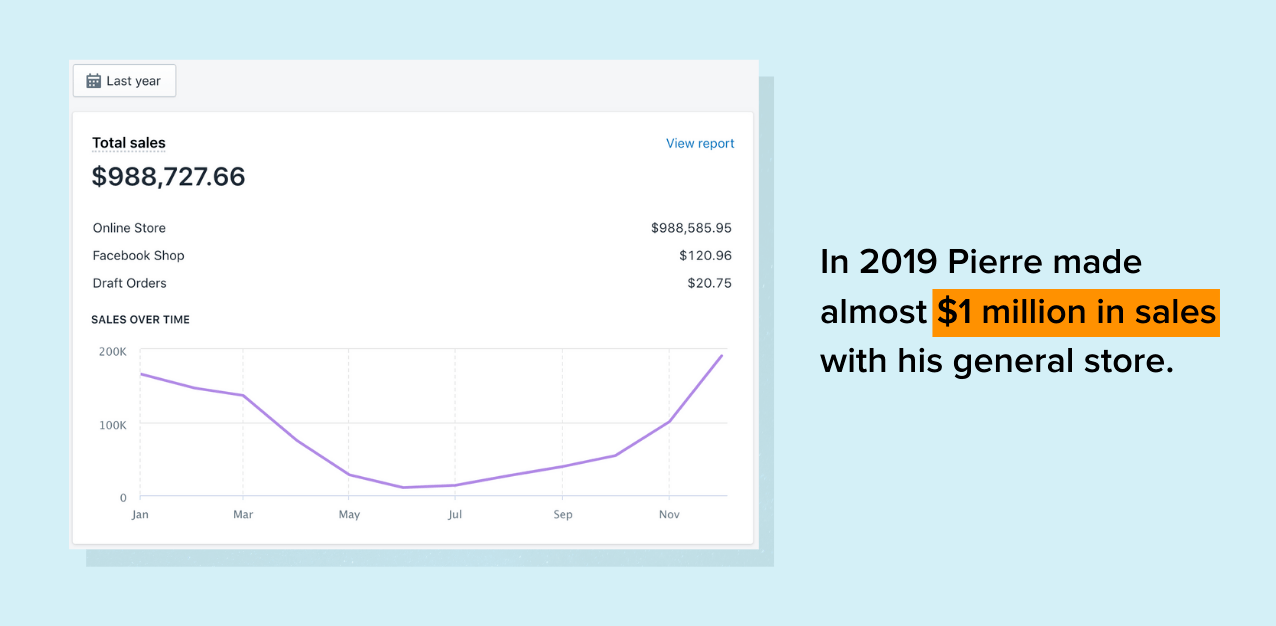
Breaking the Numbers Down
Of course, high revenue is one thing, but we all know those sales didn’t come for free. Lets dig into how much of that $988k was spent acquiring sales.
Sharing his Facebook Business numbers with us, we can see that Pierre spent $593,715.06 on Facebook ads in 2019. Some simply maths tells us that the remaining $395,012.60 accounts for the product costs, additional advertising, miscellaneous costs, such as freelancers, and Shopify subscription, and profit.
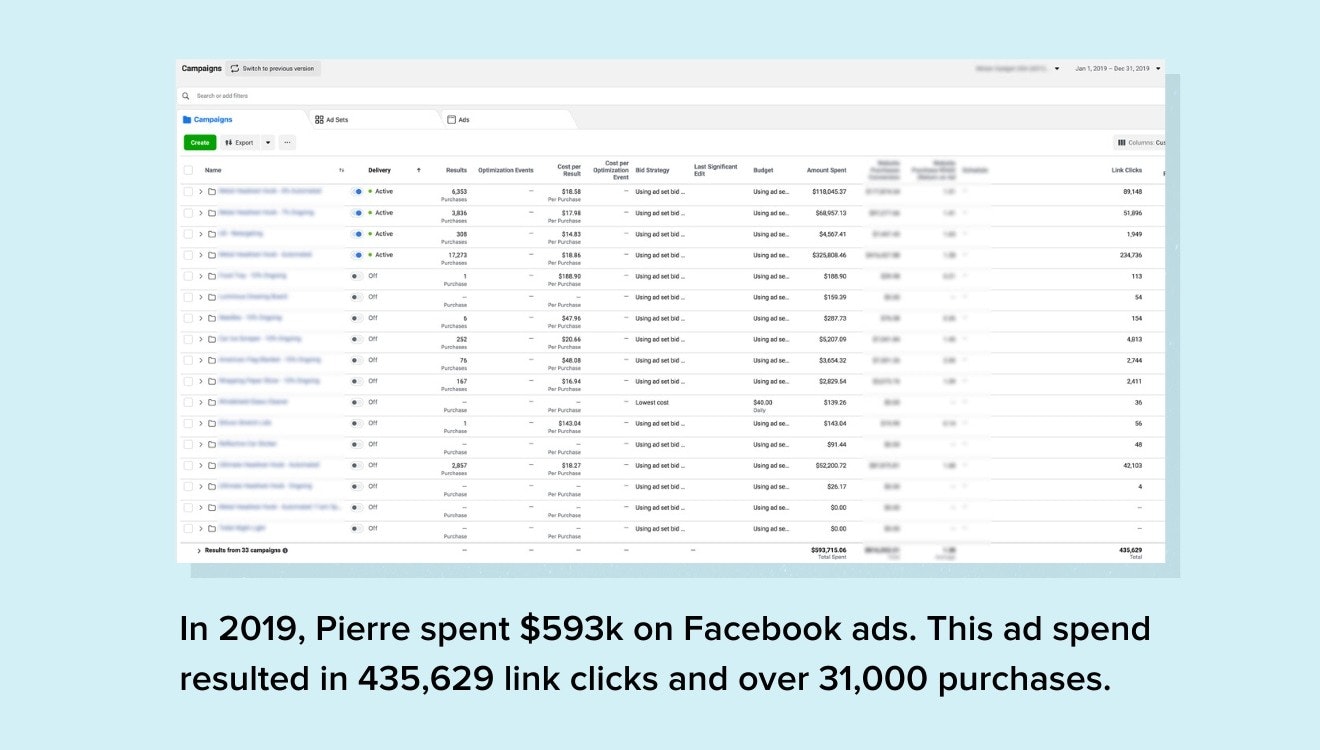
Pierre revealed that his profit margin is about 12 percent. While this may seem on the low end – generally, we see dropshippers with profit margins anywhere between 10-20 percent – it’s all part of his overall plan.
“The profit margin I make is around 12 percent because I spend a lot on Facebook. My strategy is to spend a lot. Bigger the volume, bigger the sales at the end, you know?”
By the time Q4 2019 rolled around, Pierre was spending about $100,000 a month on Facebook ads. Lukily Pierre was used to spending big amounts for clients in his day job, so despite spend such a big amount on ads, it never overwhelmed him.
Even in his first month, Pierre spent large, losing $7,000 to train his Facebook Pixel quickly. The tactic worked – the following month he made $20,000.
Protecting a Brand
With Pierre making almost $1 million in sales last year – and $1.6 million in sales in the previous 21 months – his store name and brand have become relatively established. And, while he primarily spends money on Facebook ads to gain sales, he’s also had to run Google ads campaigns to protect his brand.
“I have little campaigns mainly on my brand name to protect it. And because I have a lot of traffic with Facebook as people are still looking for my brand on Google.”
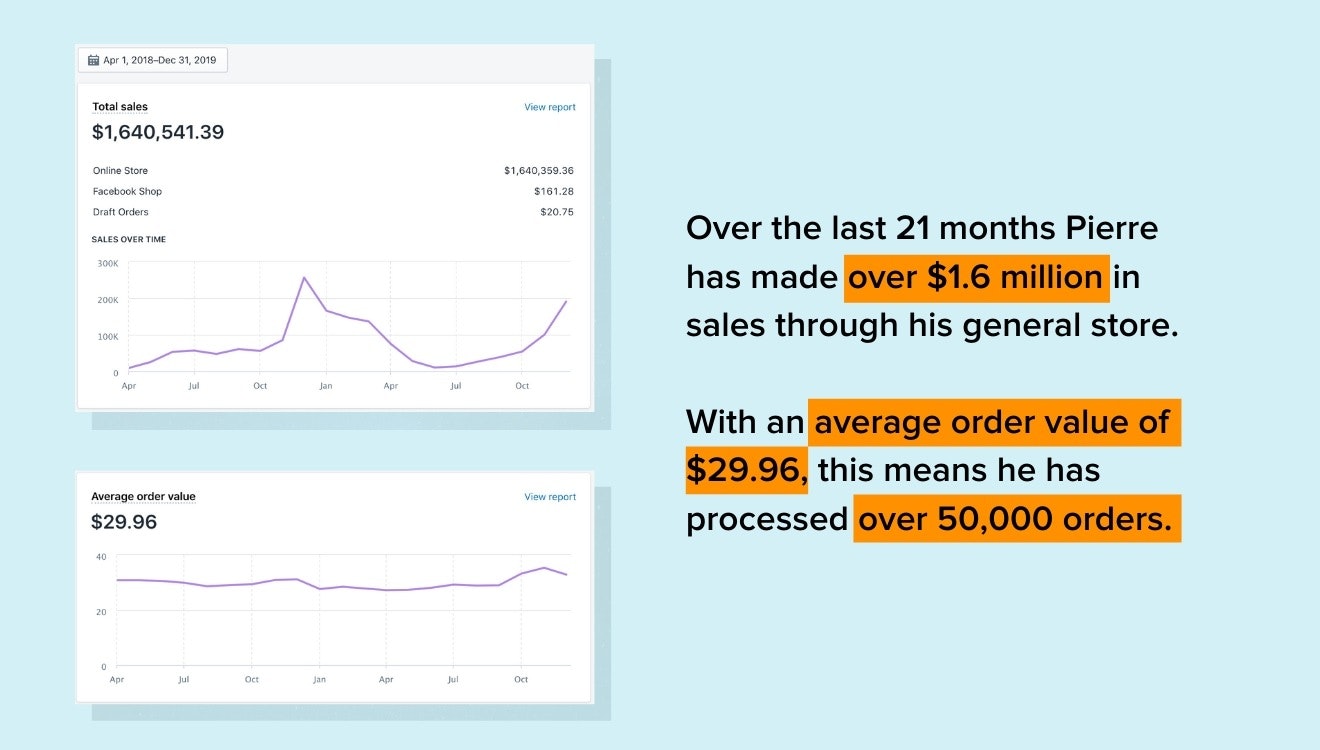
Pierre has to do this because there’s nothing that can stop your competitors from bidding on your brand name and brand keywords in their Google ads campaigns. It might sound like a frustrating thing to have to think about, but as Pierre says, “that’s part of the game.”
“Everybody is doing that. I’m doing that for the company I work with. I advertise on the brand name of our competition as well. On Google, it’s mainly to protect my brand name. I want to have every chance for someone looking for my brand and my project to find me.”
Where to Next?
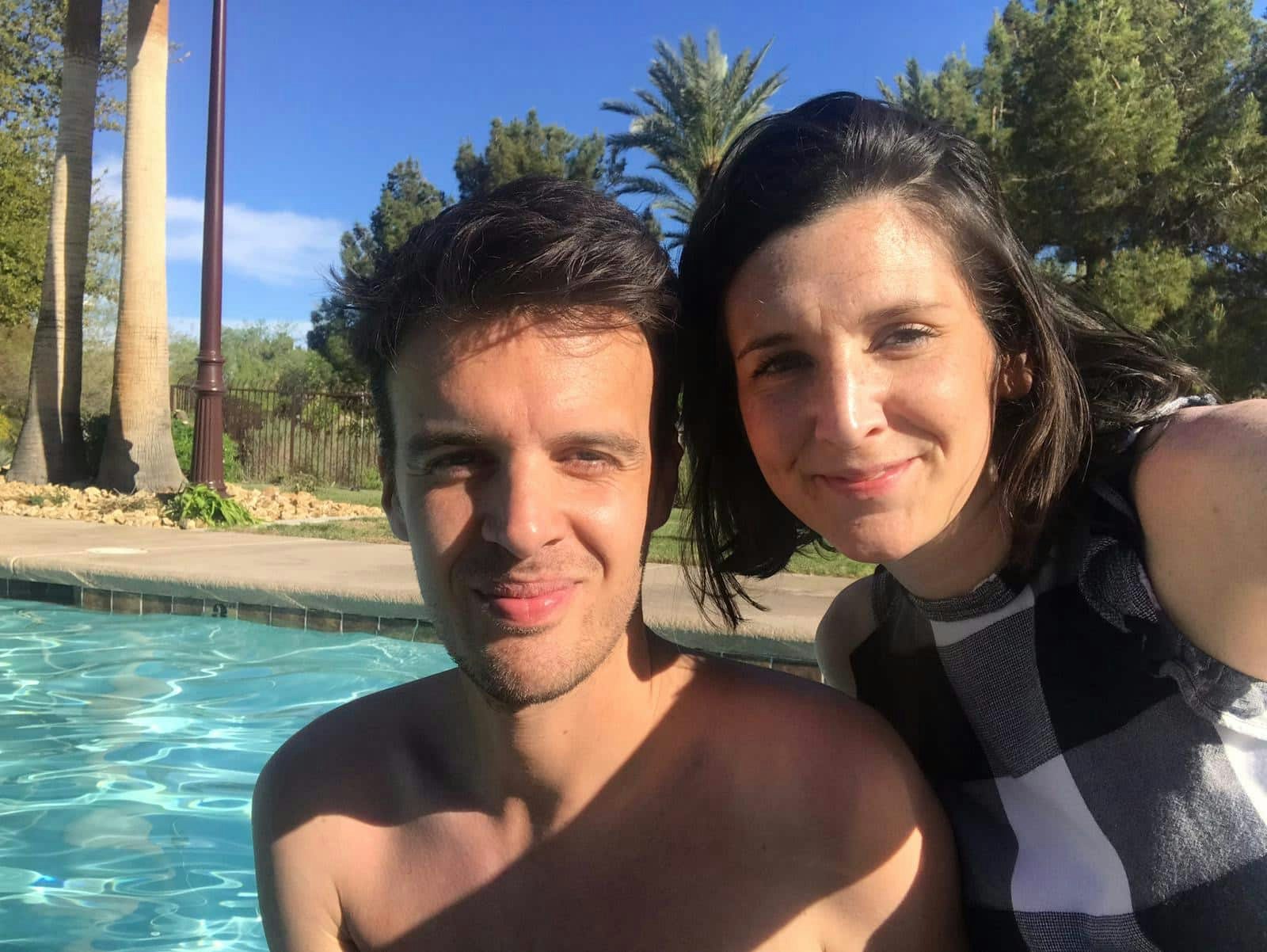
After building his store and developing systems to let him replicate his success, Pierre has enjoyed a successful last few years, but he’s certainly not slowing down now.
Currently, he works with both a supplier and an agent, who helps to ensure that there is always enough stock to fulfill orders. Working with both a supplier and agent is particularly helpful as he has started selling his most popular products on Amazon and sees a lot of room to grow this side of the business.
“The volume is way less on Amazon, but I’m just starting. It’s been a couple of months. But the dropshipping business is way bigger.”
Alongside that, Pierre is always adding new potential winning products to his store to try and reach as many people as possible. And he’s even considering launching a new dropshipping business is a whole different niche.
But despite dropshipping for almost two years, nothing is ever smooth sailing, and Pierre is still encountering obstacles. This included a massive supplier issue right in the middle of a busy period during 2019.
“My main supplier last year I think went bankrupt. I had to source from another one. It was a big process. I had a lot of questions for them because I’m selling a lot of that product and I needed the new supplier to be able to deliver them. But I finally found someone, and he’s good.”
More recently, Facebook ads have been a cause for concern.
“Facebook ads has been pretty rough with me recently. I’ve seen a shift in my CPM. I’m finding it difficult to do some profits since the beginning of the year. It’s been a rough start of the year compared to the year before and even 2018.”
Although Pierre doesn’t know for sure what’s causing the CPM issue, he’s hopeful that he’ll bounce back from this – as it has during other dips.
“I’m still hoping for better days. Actually, last year I also had a down moment around the summer. I really had to scale down my ads and spend less budget and all that, but they finally went back up.”
And that’s something he wants other dropshippers to know about too, sometimes the sales will be constant, while other times it might be a bit harder.
“I mean for people trying to launch a business with Shopify, if you find it really rough in the first month, maybe you’re just in the wrong period. Maybe wait a couple of months and [it will be] going well. There are always ups and downs.”



